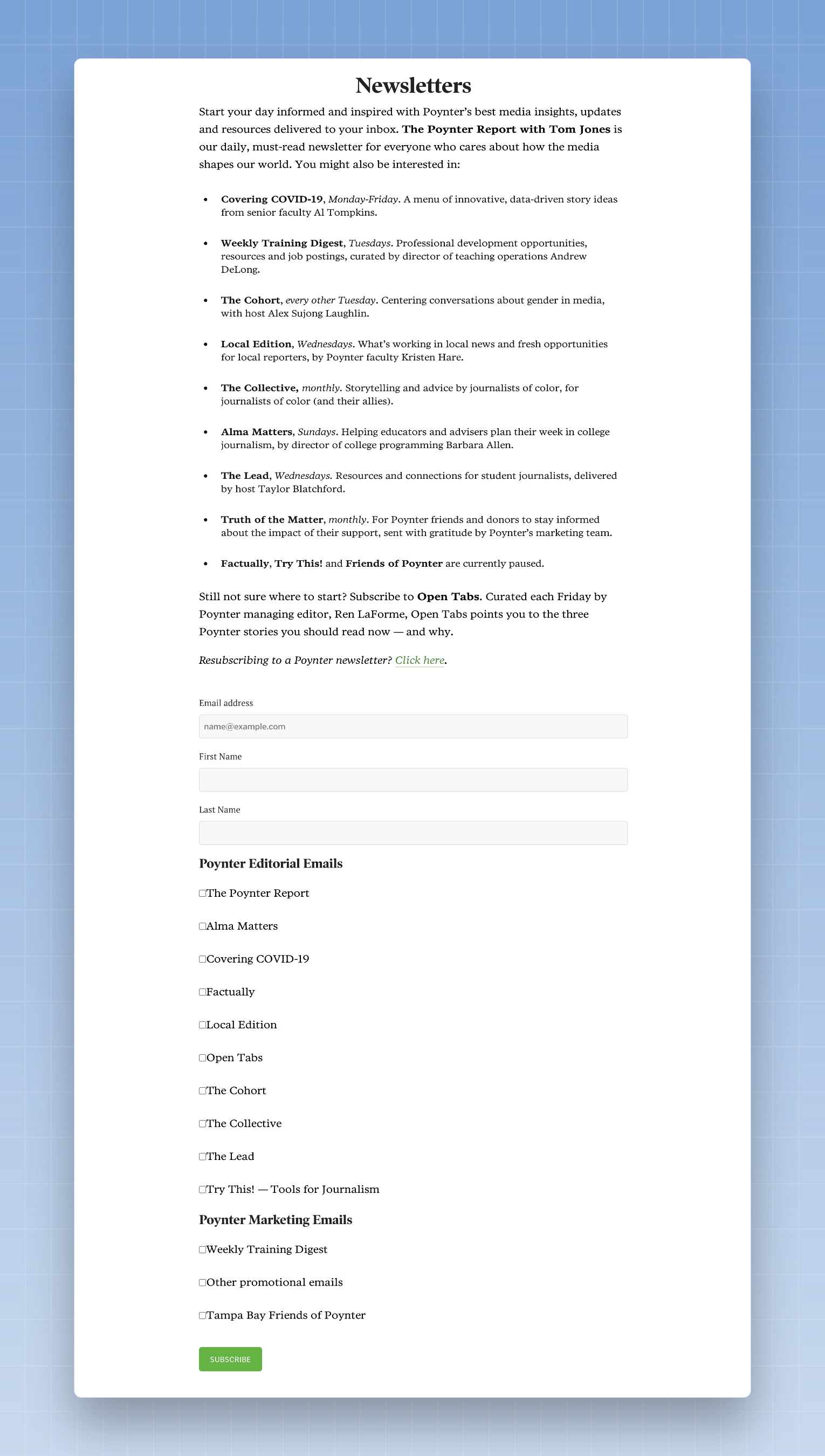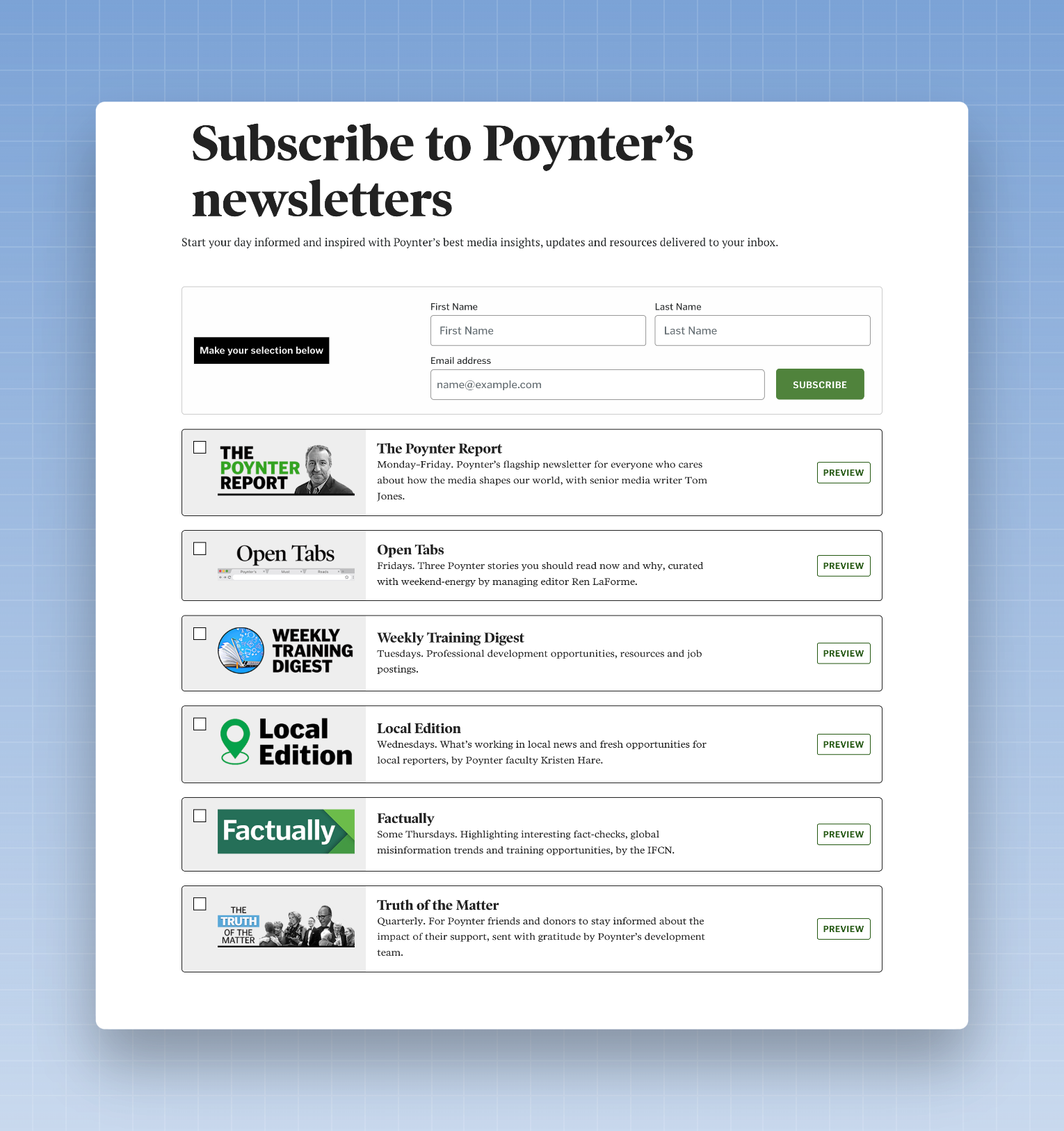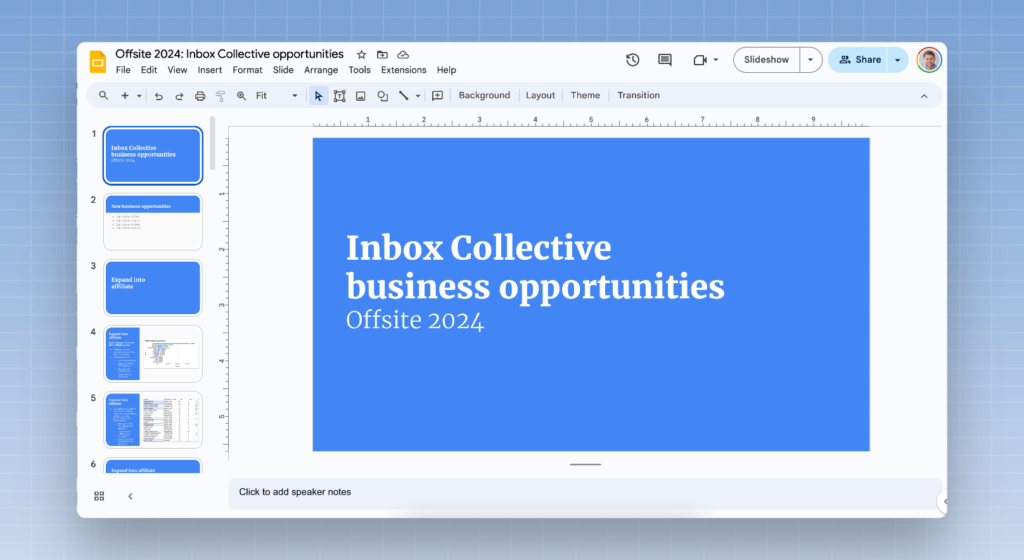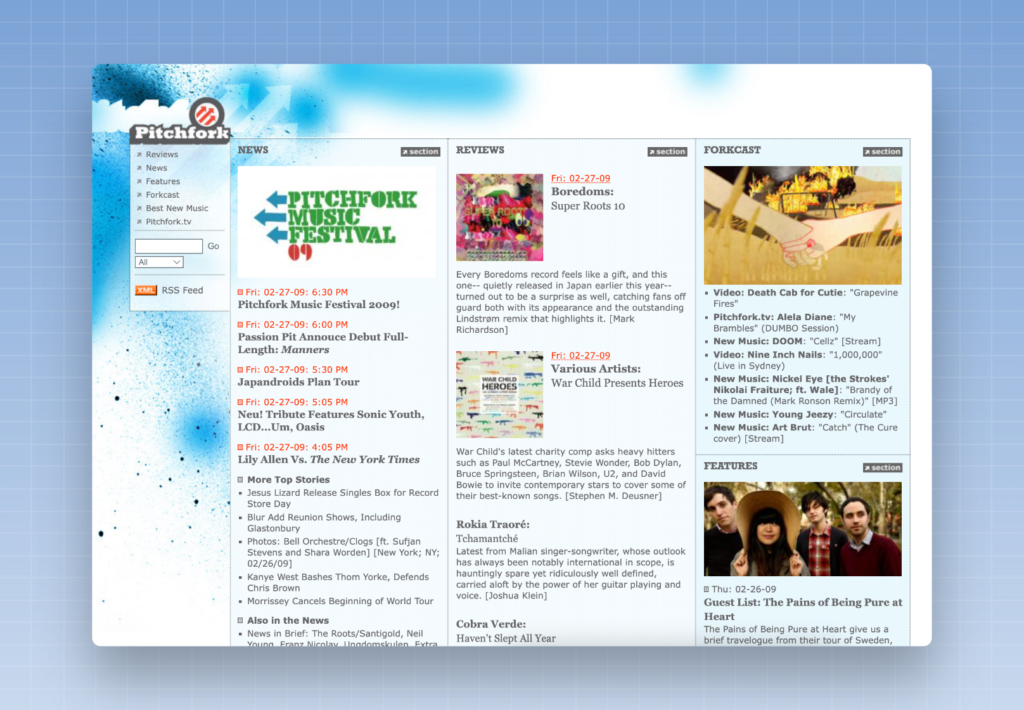A few years ago, I was working on a project with the team at Poynter. They had a landing page for their newsletters, but it wasn’t very good. There weren’t any details about any of their newsletters — what they were, who wrote them, when they’d show up in your inbox. As a result, the page wasn’t driving many sign-ups.

I showed them a bunch of options for how we could make things better. We all agreed on a new template — but it was going to take a long time for us to build out that ideal page. Instead of waiting until that page was done, we decided we’d first take a small step in the right direction.
That next step was to update the existing page with more details about the newsletters. It wasn’t perfect, but it was an improvement over what they had.

And then, a few weeks later, the Poynter team launched the final version of the page, which had a brand-new design, more details about each newsletter, and the ability to easily sign up for multiple newsletters at once.

I tell my teams often: Direction is more important than speed. Everyone wants to make big leaps forward — but sometimes, the right move is to take small steps in the right direction.
———
Those are screenshots of the Poynter newsletter page. Thanks to the Internet Archive’s Wayback Machine for the screenshots of earlier versions of the page.







